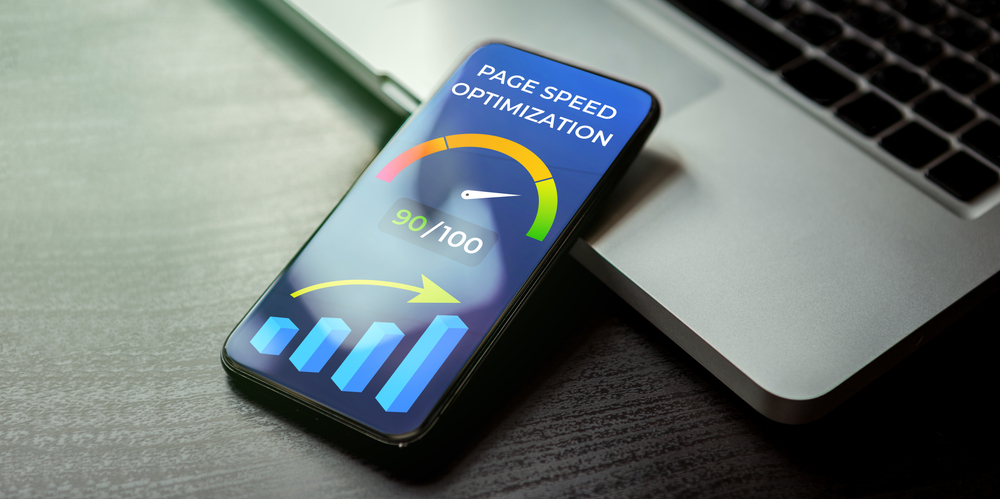In today’s fast-paced digital world, users expect websites to load quickly and efficiently. With attention spans dwindling and competition for online visibility intensifying, website speed has emerged as a critical factor in both user experience and search engine optimization (SEO) rankings. This comprehensive guide explores the importance of website speed, its impact on user experience, and how it influences SEO rankings, along with actionable strategies to improve your website’s speed.
Understanding Website Speed
Website speed refers to the time it takes for a web page to fully load and become interactive for users. It encompasses various elements, including:
- Server Response Time: The time it takes for the server to respond to a user’s request.
- File Sizes: The size of images, scripts, and other resources that need to be loaded.
- Code Efficiency: The quality and efficiency of the website’s code, including HTML, CSS, and JavaScript.
- Network Latency: The time it takes for data to travel between the server and the user’s device.
Website speed is typically measured in seconds, and even minor delays can have significant repercussions for user satisfaction and search engine rankings.
The Importance of Website Speed for User Experience
1. First Impressions Matter
Research indicates that users form an opinion about a website within milliseconds. A slow-loading site can create a negative first impression, leading users to question the credibility and professionalism of the brand. Conversely, a fast-loading website fosters trust and encourages users to explore further.
2. Reduced Bounce Rates
Bounce rate refers to the percentage of visitors who leave a website after viewing only one page. A slow-loading website can significantly increase bounce rates, as users are likely to abandon a page that takes too long to load. According to studies, a delay of just one second can lead to a 7% reduction in conversions. Ensuring your website loads quickly can help retain visitors and encourage them to engage with your content.
3. Enhanced User Engagement
Fast-loading websites provide a smoother and more enjoyable browsing experience. Users are more likely to interact with content, navigate through pages, and complete desired actions (such as signing up for a newsletter or making a purchase) when they don’t have to wait for pages to load. This increased engagement can lead to higher conversion rates and customer satisfaction.
4. Mobile User Experience
With the rise of mobile browsing, website speed has become even more critical. Mobile users often rely on cellular data, which can be slower than broadband connections. If your website is not optimized for speed on mobile devices, you risk losing a significant portion of your audience. Google’s research indicates that 53% of mobile users will abandon a site that takes longer than three seconds to load.
5. Accessibility and Inclusivity
A fast-loading website is more accessible to users with varying internet speeds and devices. This inclusivity ensures that all users, regardless of their circumstances, can access your content. A commitment to accessibility can enhance your brand’s reputation and broaden your audience.
The Impact of Website Speed on SEO Rankings
1. Google’s Ranking Algorithm
Google has made it clear that page speed is a ranking factor in its algorithm. Websites that load quickly are more likely to rank higher in search engine results pages (SERPs) compared to slower sites. In 2021, Google introduced Core Web Vitals, a set of metrics that measure user experience, including loading performance, interactivity, and visual stability. These metrics directly influence a website’s ranking potential.
2. Improved Crawl Efficiency
Search engine crawlers, which index web pages for search engines, also prefer fast-loading sites. When a website loads quickly, crawlers can efficiently access and index its content. Conversely, a slow website may lead to incomplete indexing, which can negatively impact visibility in search results.
3. Lower Bounce Rates and Higher Dwell Time
As mentioned earlier, a slow website can lead to higher bounce rates. Search engines interpret high bounce rates as a sign of poor user experience, which can negatively affect rankings. On the other hand, a fast-loading site encourages users to stay longer, increasing dwell time—another positive signal to search engines.
4. Competitive Advantage
In a crowded online marketplace, every advantage counts. If your website loads faster than your competitors’, you’re more likely to attract and retain visitors. This competitive edge can translate into higher rankings, increased traffic, and ultimately, more conversions.
5. Impact on Local SEO
For businesses that rely on local customers, website speed can also influence local SEO rankings. Google considers page speed as a factor for local search results, meaning that faster websites are more likely to appear in local searches, driving more traffic to your business.
How to Measure Website Speed
To understand your website’s current speed, you can use various tools that provide insights and recommendations for improvement. Some popular tools include:
- Google PageSpeed Insights: Analyzes the content of a web page and provides suggestions for improving speed.
- GTmetrix: Offers detailed reports on page speed, including load times, page size, and recommendations for optimization.
- Pingdom: Tests website speed from different locations and provides insights into performance metrics.
- WebPageTest: Allows you to run tests from various locations and browsers, providing a comprehensive view of your website’s performance.
How to Improve Website Speed
1. Optimize Images
Large image files can significantly slow down your website. Use image compression tools to reduce file sizes without sacrificing quality. Additionally, consider using modern formats like WebP for faster loading times. Implement responsive images to ensure that the appropriate image size is served based on the user’s device.
2. Minimize HTTP Requests
Each element on a web page (images, scripts, stylesheets) requires an HTTP request, which can slow down loading times. Minimize the number of requests by combining files, using CSS sprites, and reducing the number of elements on your pages.
3. Enable Browser Caching
Browser caching allows frequently accessed resources to be stored locally on a user’s device, reducing load times for returning visitors. Set appropriate caching headers to improve speed for repeat users. Use tools like Google Analytics to monitor cache effectiveness.
4. Use a Content Delivery Network (CDN)
A CDN distributes your website’s content across multiple servers worldwide, allowing users to access the nearest server for faster loading times. This is especially beneficial for websites with a global audience. Popular CDN providers include Cloudflare, Amazon CloudFront, and Akamai.
5. Optimize Code
Minify CSS, JavaScript, and HTML files to reduce their size and improve loading times. Remove unnecessary code, comments, and whitespace to streamline your website’s performance. Additionally, consider using asynchronous loading for JavaScript to prevent it from blocking the rendering of the page.
6. Choose a Reliable Hosting Provider
The quality of your hosting provider can significantly impact website speed. Opt for a reputable provider that offers fast server response times and reliable uptime. Consider upgrading to a Virtual Private Server (VPS) or dedicated hosting if your website experiences high traffic.
7. Reduce Redirects
Redirects create additional HTTP requests and can slow down your website. Minimize the use of redirects and ensure that any necessary redirects are optimized for speed. Regularly audit your website to identify and eliminate unnecessary redirects.
8. Implement Lazy Loading
Lazy loading is a technique that delays the loading of images and videos until they are needed (i.e., when they are in the viewport). This can significantly reduce initial load times and improve user experience.
9. Regularly Monitor and Audit Your Website
Website speed is not a one-time fix; it requires ongoing monitoring and optimization. Regularly audit your website using the tools mentioned earlier to identify areas for improvement. Stay updated on best practices and emerging technologies that can enhance website performance.
Conclusion
Website speed plays a crucial role in both user experience and SEO rankings. A fast-loading website not only enhances user satisfaction but also improves engagement, reduces bounce rates, and boosts search engine visibility. By prioritizing website speed and implementing optimization strategies, you can create a better experience for your users and improve your chances of ranking higher in search results. In today’s competitive online landscape, investing in website speed is not just a technical necessity; it’s a strategic advantage that can lead to increased traffic, higher conversions, and long-term success.

Free Assessment
Discover in just 30 minutes how our tailored social media and digital marketing strategies can elevate your brand awareness, synchronize your marketing and sales efforts, and reliably generate new leads, customers, and revenue streams.




